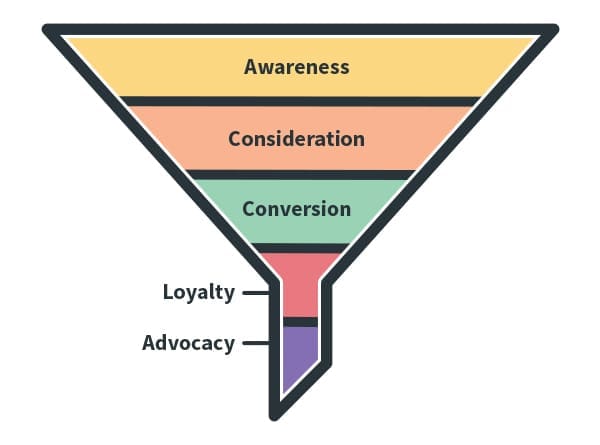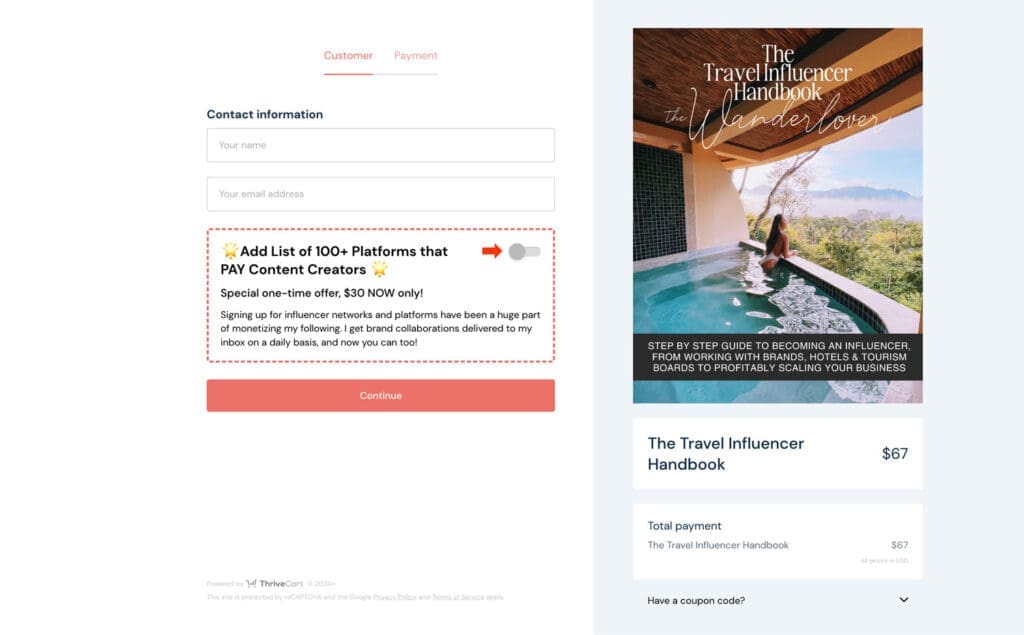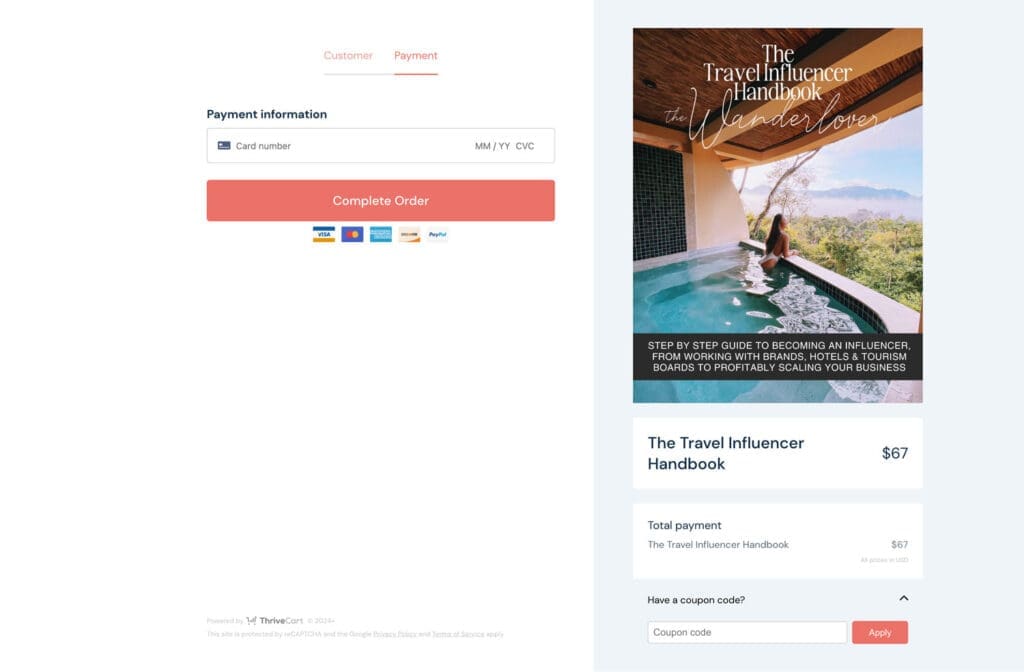Wherever you are on your entrepreneurial journey, you may have come across the term ‘sales funnel’. Don’t fret if you haven’t heard of it as we are about to take a deep dive into what it is and how it can enhance your business.
What is a sales funnel?
The sales funnel is a marketing term to describe the customer journey and the steps your audience have to take in order to make a purchase. The four stages of the funnel are awareness, interest, decision and action. Some marketers also like to add loyalty and advocacy to strengthen their strategy even further.

Why is a sales funnel important?
So why is this important? Well, a sales funnel is the key to understanding your customers. By using the funnel, you will get to know what they are thinking and doing throughout their journey. With these insights, you can then invest in effective marketing strategies to turn prospects into paying customers. It essentially helps you deliver the right information at the right time, helping you guide potential customers down the right path, so that they convert into the action you want them to take.
So with all that in mind and a but of an idea of what the funnel is, we are going to show you exactly how to optimize the sales funnel to grow your own business.
What You Need to Know First So You Can Optimize Your Sales Funnel
Before we get into the steps to optimize and improve your sales funnel. There are some things we need to know first.
Know Your Audience
Before you can use the funnel to the best of its potential, you’ll need to get to know your target audience.
Knowing what your audience wants and where they get their information, can help you to develop key messaging and marketing strategies that will turn your target audience into loyal customers.
Identifying Target Segments
Understanding your audience all begins with customer segmentation which is the process of dividing your customers into categories.
There are eight types of customer segmentations including demographics, geographics, and behaviors. These segments enable us to identify the reasons and motivations behind why people buy.
A segmentation strategy is a plan to help you identify which segments to target. To get started, you’ll need to think about the people that need your products.
Ask yourself;
- Who are they?
- What do they need?
- What do they want?
- What’s stopping them from already getting what they want?
Find out as much as you can about your target customer via surveys, polls, interviews and digital analytics.
Essentially, the more data you have about them, the easier it will be to identify target segments.
Once you know your audience, research key behaviors to find out which platforms they use and how they interact with other brands.
Creating Buyer Personas
Once you’ve undergone some thorough research, you can start to build a buyer persona. Buyer personas are basically a detailed insight into your target audience. They are used to help you create content and messaging that’s directed to the needs and behaviors of your audience. It is also an essential step in identifying target segments.
Find out everything you can about your audience and use that research to create some buyer personas. A buyer persona is a detailed and semi-fictional representation of an ideal customer for your business.
It involves creating a profile of a typical customer based on your market research, real data, and insights about existing customers.
This profile goes beyond basic demographic information and includes details such as the customer’s goals, challenges, preferences, behaviors, and buying patterns.
Here is an example of a buyer persona:
Name: Sarah Wellness-Seeker
Demographics:
- Age: 30-40 years
- Gender: Female
- Location: Urban or suburban areas
Occupation: Mid-level professional with a focus on work-life balance
Background: Sarah is a career-oriented individual who values personal growth and well-being. She has been working in a demanding job for several years and is now seeking ways to achieve a better work-life balance. She is health-conscious and actively looks for solutions to manage stress and improve her overall quality of life.
Goals:
- Achieve a healthy work-life balance
- Improve mental and emotional well-being
- Enhance self-confidence and personal development
Challenges:
- Juggling a demanding job with personal life
- Dealing with stress and burnout
- Feeling stuck in her current life situation
Media Consumption: Sarah regularly consumes content online, especially on social media platforms like Instagram and LinkedIn. She follows wellness influencers, reads personal development blogs, and listens to podcasts during her commute.
Preferred Communication Channels: Sarah prefers communication through email and social media. She values personalized messages that resonate with her goals and challenges.
Shopping Behavior: Sarah is willing to invest in personal development services that align with her goals. She appreciates free resources initially but is likely to commit to coaching programs or workshops that offer tangible benefits and a personalized approach.
You can see that when I say everything, I really do mean EVERYTHING. I’m talking about names, ages, gender, hobbies, interests, shopping habits, the products they buy, where they consume content, their needs, values, social causes and even the challenges they face.
Creating such a detailed buyer personas helps you tailor your marketing messages, content, and services to meet the specific needs and preferences of your target audience.
Assess Your Current Funnel
In order to optimize your sales funnel, you’ll need to know where you’re currently at. All businesses have strengths and weaknesses and it isn’t until we’ve identified them that we can start to make improvements.
Identifying Weaknesses
Start by looking at the top (awareness), middle (interest) and bottom (decision and action) sections of your funnel.
What’s working well and what needs improving? For example, you may find that you have weak traffic to your website which means that the top of the funnel needs improvement. In this case, you’d need to focus on SEO or create more regular content to drive traffic.
Alternatively, you may notice that you have strong traffic and weak engagement rates (middle). In this situation, you will want to look at how your content relates to your audience or whether your current strategy is attracting the target customer.
At the bottom of the funnel is sales. While the marketing part of your funnel may be strong, the sales could be weak. In this case, you could be putting a lot of focus into SEO and marketing at the top of the funnel but not enough into generating sales.
The great news is that once you’ve identified the weaknesses, you can begin to make changes and grow your business. That’s why I love the funnel!
Analyzing Conversion Rates
Before we get into this, let’s take a look at what conversion rates are and what they mean for your business.
Sales funnel conversion rates measure the rate at which prospects go from being a lead to a paying customer.
They can also measure other goals like newsletter sign-ups or the number of completed contact forms.
To get an idea of your current conversion rate, take the total number of users who convert and divide it by the overall size of your audience.
Once you have your conversion rate, you can conduct an analysis to determine where your traffic comes from, what drives your audience to convert and what gets in their way.
Tools like ThriveCart are super helpful here cause it will give you your conversion rates for all of your products and services, so you can see exactly how many people look your products, how many add to car, and and how many of those convert into paying customers.
Pinpointing Drop-off Points
It’s easy to get caught up in the top of the funnel and invest a lot of time and dollars into marketing, only to find that you are not getting the conversion rate that you had hoped for.
While this can be really frustrating, identifying drop off points is an effective way to turn results around and increase your conversion rate.
Drop-off points are the place in which your prospect abandons the journey. Recognizing these points is crucial in optimizing your funnel and creating a seamless customer experience.
You should be using Google Analytics by now and have that correctly set up on your website. While it is a little complicated to get started understanding your analytics data, it’s worth learning as it can provide detailed insights to your user journeys.
Once you have identified them, you can analyze these areas to determine what needs to be improved. Perhaps they are dropping out on the landing page and you need to work on your call to action, or maybe they drop off at check-out in which case you’ll want to improve your checkout software (see point 7).
Use Thrivecart
Instead of putting in hours and hours of time into a specific aspect of your business, check to see if there’s a faster solution – chances are there is!
The tool I absolutely swear by and is incredibly useful for The Wanderlover is ThriveCart.
ThriveCart is a powerful and versatile shopping cart solution designed to streamline and help you make sales online. It offers tools and functionalities to create high-converting checkout pages, manage your products, track sales, and automate your Marketing.
In my personal opinion, it’s an essential tool for any entrepreneur looking to sell online products, services, courses, ebooks and more. It can also be used to manage subscriptions, free trial periods and split payments. Sounds good, right?
Benefits for Sales Funnel Optimization
When it comes to sales funnel optimization, ThriveCart is very user friendly with a fast and easy checkout that reduces cart abandonment rates. It also offers payment plan options to reduce some of the financial barriers your customers might face.
On top of that, ThriveCart provides a detailed analytical report to help you stay on top of your sales and conversion rates. I wrote a detailed article on Thrivecart and how it’s completely changed my business here.
So how now we know have a good idea of what a Sales Funnel is and how identify weaknesses, what are some ways we can improve it.
Compelling Product Pages
Turning your leads into conversions (getting your audience to make a purchase) all starts with content and your product pages.
You’ve done the hard work, writing blogs and sharing across your socials, so once you’ve brought your audience onto your website, you need to have content that they can connect with and encourages them to purchase
A product page should provide your readers with everything they need to know and encourage them to make a purchase.
The copy should be persuasive, and engaging and reflect your brand’s tone of voice.
Optimizing Product Descriptions
An effective product description needs to be short and simple.
Identify SEO keywords and use them in the headline and product descriptions.
Make the text easy to read and break it up using subheadings and bullet points. As the saying goes, focus on the benefits not features.
Make sure you create a call to action that is straightforward and stands out on the page. This one is super important because it’s the thing that will turn your leads into conversions.
Use High-Quality Visuals
When we shop online, we are automatically drawn to things that appeal to the eye. That’s where visuals come in!
Break up your copy with high-quality visuals such as images and videos.
Streamline the Checkout Process
Why do people shop online? For ease and convenience! In fact, it’s estimated that a whopping 83% of customers shop online for that reason, with 63% citing a larger selection of products and cheaper prices as their main incentives.
Online shopping should be far less time-consuming and way more relaxing than a physical shopping trip, right? As entrepreneurs, it’s important that we keep this in mind when developing our website. One of the most significant factors in determining the ease of online shopping is the checkout process.
Simplifying User Experience
The user experience is used to define how customers feel when using a particular product, service, app or website. We want our customers to have a positive experience and get the information they need.
In order to improve the experience, you’ll need to put a lot of thought into the web design and content. Ensure that it’s appealing to the eye with plenty of visuals and clear and concise language. Minimize distractions on the page and make sure that your website is easy to navigate.
Reducing Friction Points
In marketing, friction points are anything that slows down user engagement and retention.
Friction points usually come in the form of obstacles like complicated check-out processes or web pages that are not mobile user-friendly. This could look like unnecessary fields that a user has to fill out, or too many upsells through the checkout process.
To reduce your friction points, you will need to identify them by conducting customer research and using online tools to map the user journey. Once you know what the friction points are, you can then put some measures in place to reduce them.

Notice how on my Handbook Checkout there is nothing that is not directly related to converting. No unnecessary fields to fill out, no buttons for anything other than people to continue the checkout.
Building Trust in the Checkout
A common question many entrepreneurs have is “How can we get customers through the checkout?” Well, first you’ll need a smooth process and secondly, you’ll want the customer to trust the system.
According to stats, 35% of people abandon websites without a security badge. Words like ‘Secure Checkout’ and logos that display major credit card companies are simple ways to build trust with your prospective customers.
You’ll also want to keep your SSL certificate up to date and display a secure checkout badge. ThriveCart helps to make this really easy as it comes with a fully customizable secure checkout to build your perfect checkout experience.
A live chat or customer service contact can also put prospects at ease and encourage them to proceed with their purchase.

Use Analytics
As entrepreneurs in the digital age, analytics are a vital asset to our business and data-informed decisions are increasingly important. In fact, it is estimated that data-driven businesses are 23 times more likely to acquire customers and six times more likely to retain them. Now that’s a powerful stat!
We already know that ThriveCart is an excellent way to sell online products and services but what about analytics? Well, this online shopping cart tool can also be used to collect data and enhance your marketing plan. Let’s take a closer look.
Tracking Sales Performance
In order to boost sales and streamline operations, you’ll want to set up ThriveCart tracking. ThriveCart tracking is designed to provide users with insightful data and track conversion rates. If you use affiliate marketing, it also monitors the performance of affiliates and tracks the number of sales generated through their links, saving you time and resources.
Beyond sales, ThriveCart can also provide customer behavior insights to deepen the understanding of your audience.
Making Data-Driven Decisions
Using data to inform your decisions will steer you in the right direction and optimize your sales funnel. Start by analyzing the data and using it to form a plan. Focus on the data that are relevant to your goal and consider all the ways you can utilize it before moving forward.
Email Marketing Integration
In today’s world, where the majority of communication takes place online, it is no surprise that email marketing has become an essential tool for entrepreneurs. With 4 billion daily email users and a significant increase in email engagement over the last 12 months, it’s clear that we need to invest into this strategy.
Part of your strategy should involve email marketing integration. This is the tying together of the rest of your digital marketing efforts to build a more effective relationship with your audience. My go-to tool for email marketing integration is Active Campaign.
As a cloud based marketing platform, Active Campaign allows you to run your business with ease by combining email marketing, sales automation, and customer relationship management (CRM) all into one place. Essentially, it streamlines and simplifies tasks so that you can focus on growing your business.
Integrating Email Campaigns
Active Campaign allows you to create and send emails using a campaign that’s tailored to your needs. From A/B split testing to date-based campaigns, you can keep your customers up to date all while following their user journey.
Personalized Email Sequences
Personalized email sequences enable you to set up automated emails for specific people at specific times. For example, if someone still has an item in their basket, you can set up an email sequence to remind them about that item. As you can probably imagine, email sequences can help you retain and gain customers.
Active Campaign enables you to set up and edit email sequences so that you can tailor it to your target audience. The step by step process is quick and easy to use, saving a lot of time and hassle.
Automation for Follow-ups
Similarly, you can create automated follow-up emails that are sent at specific moments in the customer journey. So, if the customer still hasn’t checked out of their basket, you can create a series of follow-ups that include everything from incentives to simple reminders.
Boost Customer Retention
It’s one thing to sell a product but ensuring that your customers return time and time again is a whole different ball game. Luckily, there are plenty of ways to boost customer retention including loyalty programs and subscription services.
Implementing Loyalty Programs
Loyalty programs are a great way to boost customer retention, increase sales and grow your business. We often spend a lot of time finding ways to get new customers but we also need to focus on the ones who are already engaged. Loyalty programs show your customers that you care and give them a reason to stick with you.
To launch a loyalty program, choose one that suits your business. Options include points based programs, tiered loyalty programs, or value based loyalty programs. You’ll then need to define your goals, identify your audience, personalize the program and create incentives.
Subscription Management Features
Once you’ve set up a loyalty program or subscription service, you’ll need to find a way to manage it. For successful subscription management, collect subscriber data using a cloud-based software that will enable you to pull customizable reports, manage monthly and annual payments, and handle promotions and discounts.
Addressing Customer Feedback
Refining and improving our services all begins with customer feedback. Collecting feedback is one thing, but the way we address it plays an essential role in customer retention. It can also open our eyes to new pathways and possibilities that we hadn’t considered before.
To address customer feedback effectively, it’s best to review it first and make a plan on how to respond. Focus on the most impactful feedback and only address requests that you feel confident in and can come up with possible solutions for.
Aim to reach out to customers within a timely manner, thank them for their feedback and acknowledge their concerns.
Scaling Your Funnel
From identifying your target audience to getting them through the checkout, each stage of the funnel requires attention. As we scale our business, we need to find ways to manage the growth. So, are you up for the challenge?
Handling Increased Traffic
As you optimize your funnel, you will start to notice a rise in traffic to your website. Hooray!
This is when all that work starts to pay off. But before you put your feet up, you’ll need to find a system to handle the increase in traffic.
Without the right steps in place, your website can slow down which will significantly impact the user experience and can prevent prospective customers from making a purchase. First of all, you’ll need to install a caching plugin to help increase the overall speed of the website. It’s also worth increasing security measures and upgrading your web hosting deal from a shared hosting plan to a VPS or dedicated server. Lastly, you’ll want to check through these changes to make sure that everything works well.
Ensuring Scalability
Scalability is the ability to perform well under an increase in workload. One of the fundamental aspects of scalability is having scalable technology and software that can handle the increase in demand. You’ll also want to invest in automated systems like content management and project management platforms to reduce the amount of manual labor.
Strategies for Sustainable Growth
Without going into too much detail, there are three main types of growth in business.
There is rapid growth, which tends to happen very quickly and can put a strain on funding and resources.
There is slow growth which can cause your business to stagnate, and then there is sustainable growth.
Then there is sustainable growth is defined as a realistic level of growth that an organization could maintain. As online entrepreneurs looking for the perfect work life balance, we want to aim for sustainable growth.
Sustainable growth prevents us from running into problems. Strategies for this type of growth include developing a powerful brand, customer retention, collaboration, aligning your sales and marketing and always continuing to analyze and improve these strategies.
Summary
As you can see, optimizing your sales funnel is a big task but the rewards are even bigger. If you’re looking to grow your business and make more money, you’ll want to focus on your sales funnel. Take it step by step and conduct a regular analysis to see where you’re at.
The sales funnel constantly needs revising and adapting so if you notice a decrease in sales or engagement, you’ll need to go back to the funnel. From making data driven decisions to creating persuasive copy, there are so many things we can do to optimize our sales funnel.
Start by analyzing your current funnel to determine where you need to improve. If it seems like a big task, just focus on one or two steps or seek the help and guidance of a professional business coach.












